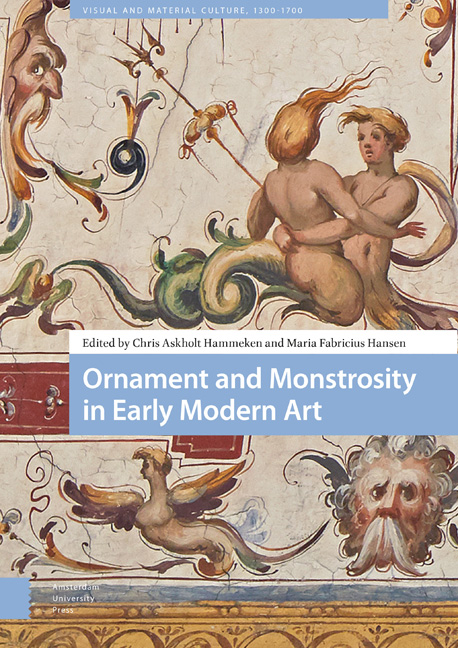9 - Trafficking the Body: Prolegomena to a Posthumanist Theory of Ornament and Monstrosity
Published online by Cambridge University Press: 21 November 2020
Summary
Abstract
This chapter activates a posthumanist conceptual framework – including general complexity theory, aesthetic philosophy, and Wilhelm Worringer's theory of abstraction and empathy – in order to explore how ornament and monstrosity uphold and negotiate the supremacy of the generalized entity, the body, and its ultimate derivation from the specific figure, the autonomous human body. Whereas ornament belongs to the periphery of the human body, monstrosity emerges when the body is invaded by foreign parts of humans, animals, plants, inorganic nature, or artefacts. If ornament and monstrosity and their sustaining body/less complex hierarchy peak in humanist cultures, even then these cultures appear as fragile islands that are often flooded by a surrounding nonhuman sea, sixteenth-century Mannerism being a case in point.
Keywords: ornament, monstrosity, abstraction, complexity, Great Chain of Being, Inorganicity
Introduction
Viewed through a classically aesthetic lens, ornament and monstrosity could resemble a pair of exact opposites. Each relates in a mutually antagonistic way to what we could call the ‘body’ – a category spanning the organismal body proper and its structural echoes in things (buildings, instruments, clothes, food, pictures). Ornament is the supplement that beautifies the body with small doses of matter which do not belong intrinsically to the body proper, typically what we will term less complex materials – from plants to minerals, or naturalistic or abstract patterns derived from such materials. Monstrosity, on the other hand, signifies a distorting, uglifying, and typically scary invasion of the body by the same sort of matter which does not properly belong to it. And yet the two notions have something in common. They both uphold the supremacy of the body, especially the human body and its echoes in things. Ornaments directly point to this supremacy by discreetly framing the body with non-bodily matter. Monstrosity upholds the same supremacy indirectly by mobilizing the memory of an intact body that may counteract the monstrous body actually shown. Ultimately founded on a dualism between human body and nonhuman surroundings, indeed on a whole hierarchy spanning these poles, ornaments and monstrosity both emerge as basically humanist aesthetic tools. They both suppose a hierarchy between a body occupying the centre and less complex materials occupying the periphery – the distinction between important and less important that is described in the classical humanist tradition using two terms: ergon(‘work’) and parergon (‘bywork’).
- Type
- Chapter
- Information
- Ornament and Monstrosity in Early Modern Art , pp. 245 - 276Publisher: Amsterdam University PressPrint publication year: 2019



